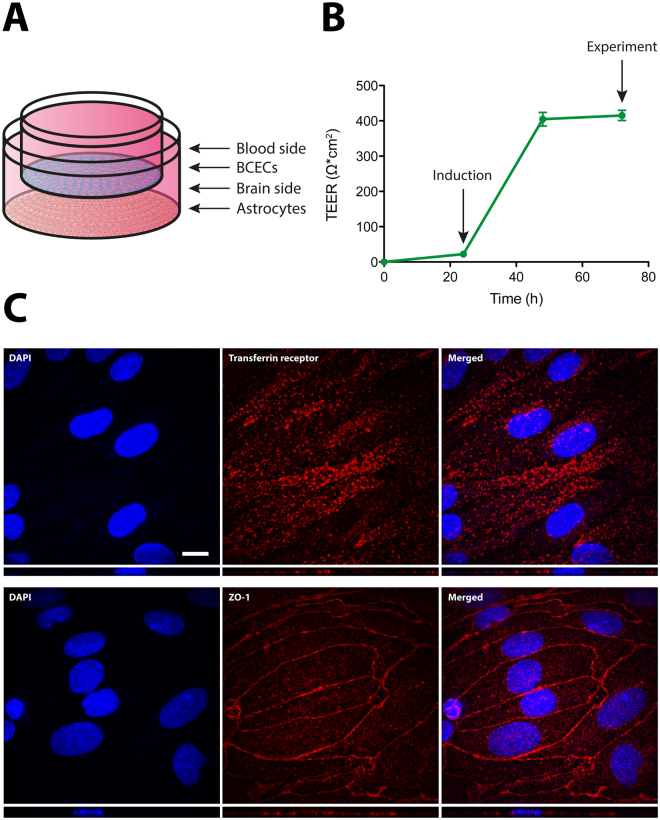Figure 1.
Setup and characterization of the in vitro model of the BBB based on primary rat BCECs and astrocytes. (A) Primary BCECs derived from young rats were setup in Transwell co-culture with astrocytes, hereby yielding a polarized layer of BCECs to be used for uptake and transcytosis experiments. (B) TEER was measured continuously to evaluate the tightness of the in vitro BBB model. The TEER values were approximately 400 Ω*cm2 at the time of the experiments, and this value was stabile throughout the duration of any experiment. (C) After reaching high TEER values, the resulting tight BCEC monolayers expressed both transferrin receptors (upper panel) and the TJ-related protein, ZO-1 (lower panel). The positive staining for the transferrin receptors was found associated with the luminal membrane as well as in the cell cytoplasm, whereas the ZO-1 staining presented as a homogenous lining of the intercellular junctions, suggesting the presence of functional tight junctions. Scale bar depicts 10 µm. BBB: Blood-brain barrier. BCEC: Brain capillary endothelial cells. TEER: Transendothelial electrical resistance. DAPI: Diamino-phenylindole. TJ: Tight junction. ZO-1: Zonula occludens 1.

